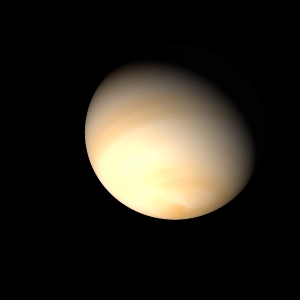|
|
Space Astro
|
Info for exoplanet "Bian'nome"
| Scientific (actual) data |
|---|
| Name | HD 220074 b |
| Planet status | Confirmed |
| Mass sini | 11.1 |
| Orbital period | 672.1 |
| Semi major axis | 1.6 |
| Orbit eccentricity | 0.14 |
| Discovered | 2012 |
| Updated | 2012-11-13 |
| Omega | 323 |
| Tperi | 2451160 |
| Publication | Published in a refereed paper |
| Detection type | Radial Velocity |
| Star name | HD 220074 |
| Right ascension | 350.06° |
| Declination | 61.97° |
| Mag v | 6.4 |
| Star distance | 290.2 |
| Star metallicity | -0.25 |
| Star mass | 1.2 |
| Star radius | 49.67 |
| Star sp type | M2III |
| Star age | 4.5 |
| Star temperature | 3935 |
| Wikipedia article | HD 220074 b |
Back
| |
| Fictional info (?) |
|---|
| Suggested name | Bian'nome |
| Planet type | Cold planet |
| When viewed from Earth, this proximity to HD 220074 means the planet can only be seen near the western or eastern horizon during the early evening or early morning. |
| Atmosphere | Hydrogen peroxide | 90% |
| Water vapor | 4.9% |
| Hydrogen chloride | 4.1% |
| Ammonium hydrosulfide (NH4SH) | 0.21% |
| Hydrogen | 0.042% |
| Atmospheric pressure | 0.4 bar |
 |
| No known satellites |
| Google search for Bian'nome |
|
Website by Joachim Michaelis
|
|
|
|